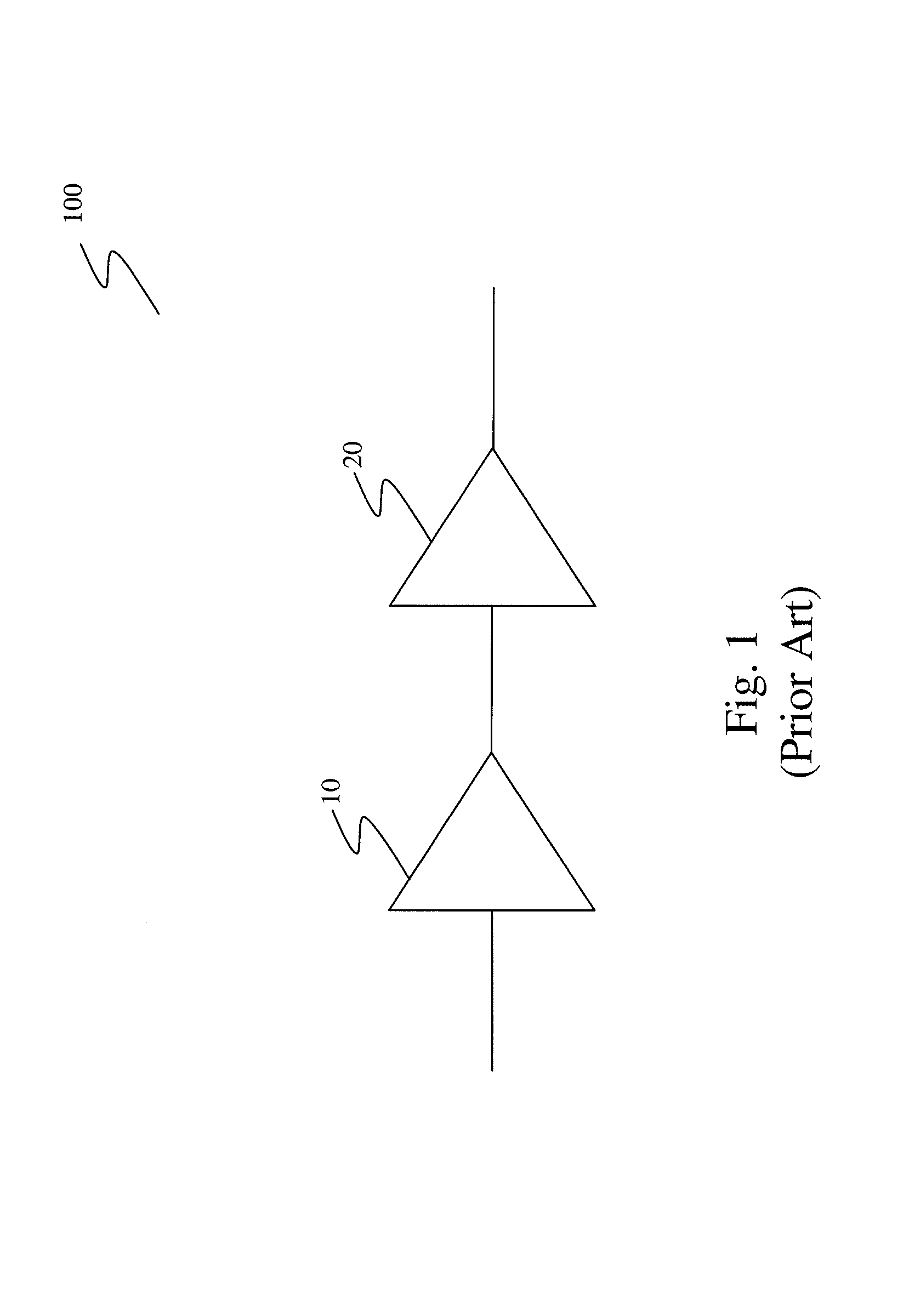High efficiency linear microwave power amplifier
- Summary
- Abstract
- Description
- Claims
- Application Information
AI Technical Summary
Benefits of technology
Problems solved by technology
Method used
Image
Examples
Embodiment Construction
[0038]FIG. 4 shows a two-stage amplifier 400 including an exemplary arrangement of amplifier stages according to the embodiments of the present invention. In this embodiment, the pre-distortion biasing scheme used for the FETs of the two stages 10, 20 shown in FIG. 1 is reversed. In other words, in two-stage amplifier 400 of this figure, a driver amplifier 70 is formed by a class A or class AB amplifier and is followed by a power or final stage amplifier 80 formed by a class B or class C amplifier. This arrangement presents a post-distortion approach to the linearity problem.
[0039]Class C amplifiers, despite their high efficiency, are rarely used in the field because their output suffers from a high degree of distortion and needs filtering. At the same time, gain expansion or gain enhancement, such as that shown in FIG. 2, mostly occurs in the high efficiency class C mode.
[0040]Combining gain expansion with class C amplifier operation offers a novel approach for compensating for the...
PUM
 Login to View More
Login to View More Abstract
Description
Claims
Application Information
 Login to View More
Login to View More - R&D
- Intellectual Property
- Life Sciences
- Materials
- Tech Scout
- Unparalleled Data Quality
- Higher Quality Content
- 60% Fewer Hallucinations
Browse by: Latest US Patents, China's latest patents, Technical Efficacy Thesaurus, Application Domain, Technology Topic, Popular Technical Reports.
© 2025 PatSnap. All rights reserved.Legal|Privacy policy|Modern Slavery Act Transparency Statement|Sitemap|About US| Contact US: help@patsnap.com



